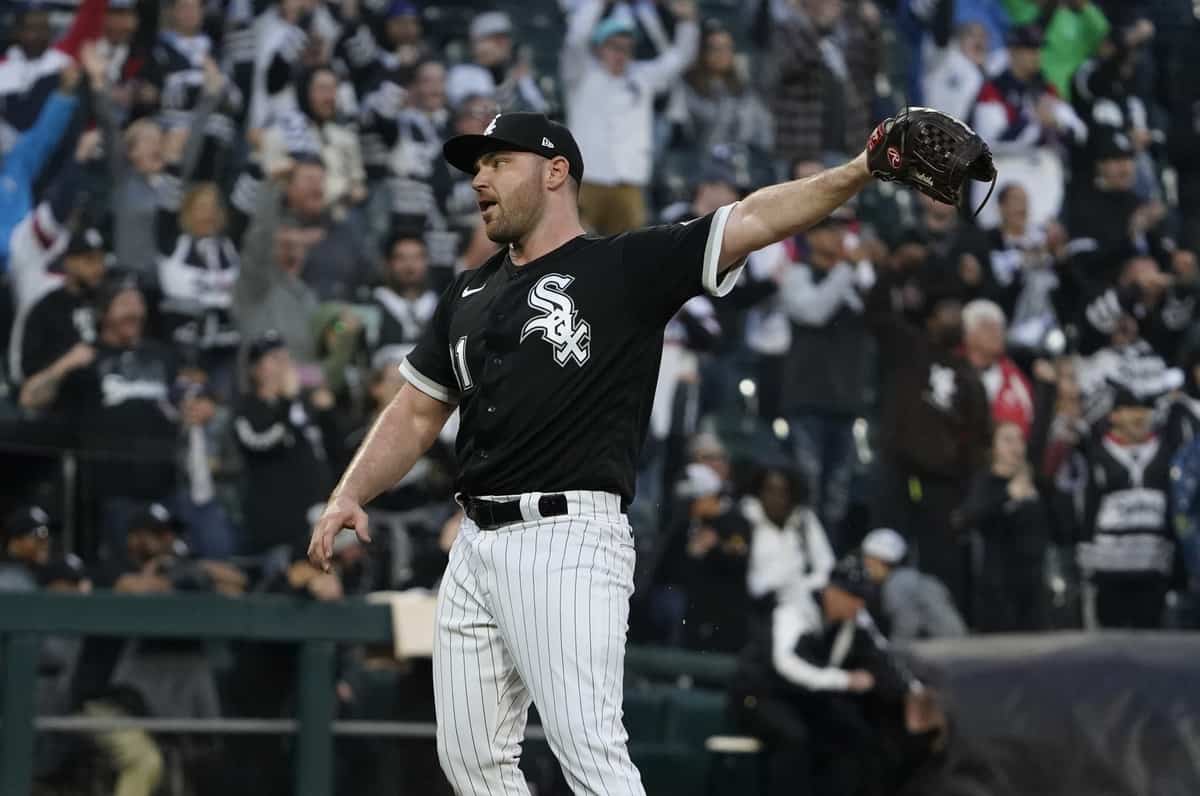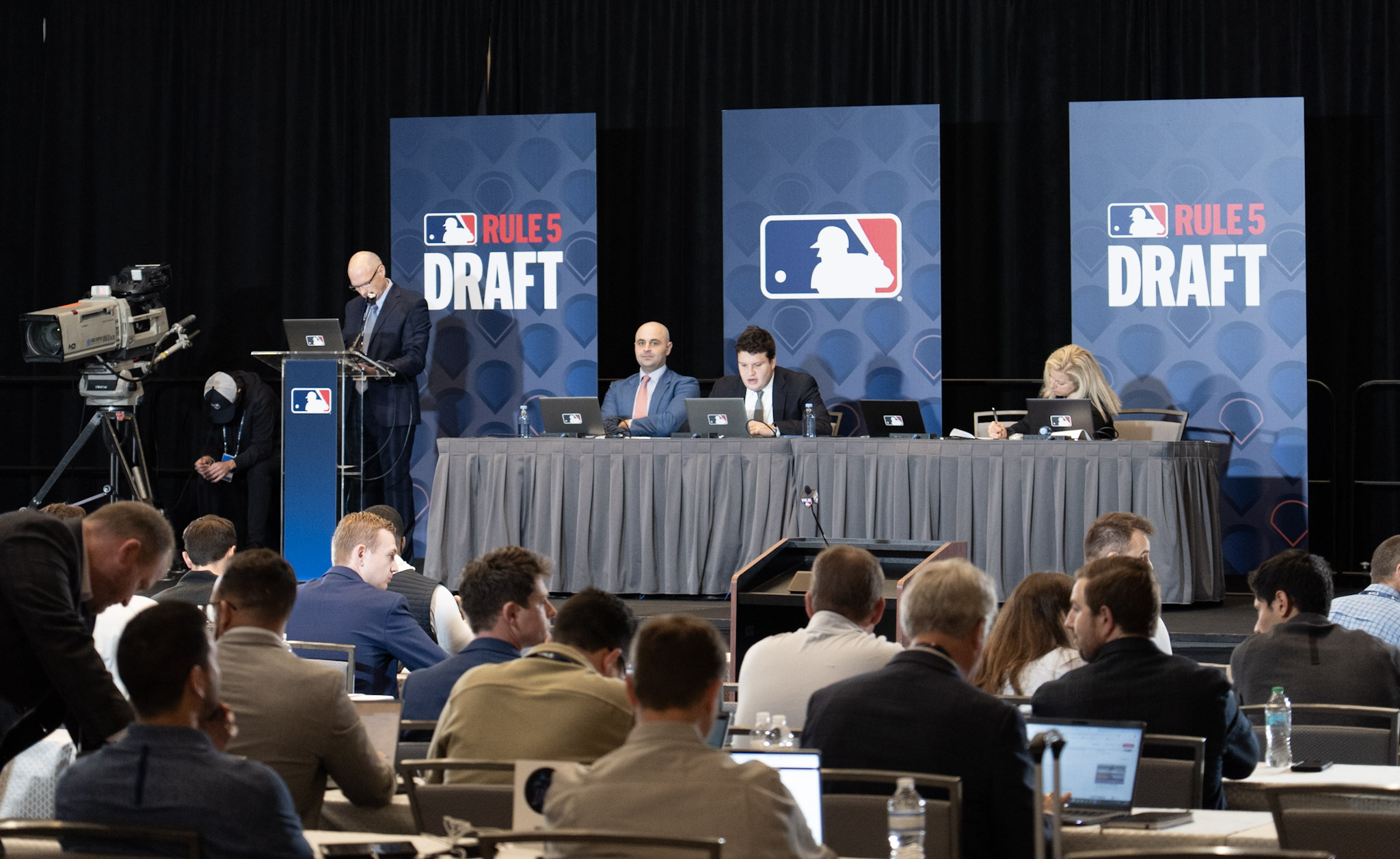It's always ill-advised to judge a player off two games, but sometimes it's fun for noting purposes.
After his disastrous eighth inning on Thursday in which he retired the first two batters before failing to retire his last five, Joe Kelly is already -0.5 WAR in the hole according to Baseball-Reference.com's calculations. FanGraphs is kinder and probably more faithful to the concept of WAR at -0.1, but since Kelly has taken the loss in one of his two games, -0.5 WAR has a logical consistency underneath the visceral, RealFeel nature of his face-plant out of the gate.
Kelly's track record says he should be better than this, and by the end of the year, I'm guessing he'll settle into an above-average season as long as his arm allows it. But while watching Kelly unravel, I began to think about how the White Sox have prioritized relievers during four recent acquisition periods:
2020 draft: Selected Garrett Crochet with the express purpose of fast-tracking him to the bullpen.
2020-21 offseason: Made Liam Hendriks their highest-paid acquisition (although Lance Lynn drew even after his extension).
2021 trade deadline: Swung separate deals with the Cubs for Ryan Tepera and Craig Kimbrel.
2021-22 offseason: Picked up Kimbrel's option and invested the most money in Kendall Graveman and Joe Kelly.
It's a mixed bag of results. Hendriks has been mostly great and Tepera did everything he could. Crochet helped during his first year-plus, but now he's out for a year-plus with Tommy John surgery. Kimbrel was a disaster, and while the Sox were able to flip him for AJ Pollock, exercising his option rerouted the Sox's attention to the barter market, rather than using the $16 million any way they pleased.
Graveman and Kelly are still in first-impressions stages, with Graveman's as good as Kelly's is gross. Yet despite the chasm between their results, the gap between the satisfaction with their signings is considerably smaller. Nobody is happy yet with Kelly because he was unavailable, and now he's uneven.
But Graveman's success has its own catches. He's pitched so well that he started the season pitching too frequently, prompting Tony La Russa to withhold Graveman from situations that would normally demand his services. Cautious fans are afraid that Graveman might wear down, while the carpe diem fans are irritated that one day of rest isn't sufficient.
Relievers are the only players who carry such a heavy concern of overuse. Sure, if the White Sox extended Carlos Rodón the qualifying offer, they'd have to be wary of his workload, but starters come with set expectations of scheduling and usage. They pitch once every five or so days, and everybody's hoping for six or so innings when they work. When all is said and done, they should have around 25-30 starts on their record, with hopefully enough innings to qualify for the ERA title.
Quality relievers have big-picture expectations -- 60-plus games, 70-plus innings -- but their week-to-week patterns can shift dramatically. An imbalance of high-leverage situations can take them out of so many games where they'd normally make an impact.
Watching Hendriks and Kelly experience high-profile duds while the Sox try to prevent Graveman from overheating, I wonder if there a detrimental effect to investing so much time and money into a position that can't play as much as possible.
Take the Kimbrel-Pollock trade. A snapshot of the deal shows the Dodgers coming out ahead ...
- Kimbrel: 7.2 IP, 6 H, 1 R, 1 ER, 3 BB, 7, 5/5 SV
- Pollock: .210/.242/.306 over 66 PA
... but Kimbrel's velocity is down from last year, and he's averaging more than three days of rest between appearances. He still requires careful handling, and the Dodgers are one of the few teams with the offensive firepower and pitching depth to give it to him.
Pollock had an abysmal start with a hamstring strain holding him back, but he's shown signs of life over the last week, with a couple multi-hit games, a couple of extra-base hits, a couple of walks. If he trips and falls into a ditch to start the season, he can theoretically try climbing out of it the very next day and not stop until he's in the black. When Kelly does the same, he has to wait two or three days before redemption, so it takes considerably longer for his impact to unfold.
Repeat that over the course of four acquisition periods, and games like Thursday show what it looks like when they reach the point of diminishing returns. Going back to the bullpen over and over again while slapping patches on position-player shortcomings is a defensive, conservative approach focused on preciously guarding the leads acquired. It's great when it works, but it requires so much of the first six innings to go according to plan, and the Sox haven't spent nearly as much time addressing the first six innings.
Now, Hahn had reasons to believe that some gaps could be addressed by internal improvements -- full seasons of Eloy Jiménez and Luis Robert, the maturation of Andrew Vaughn and Dylan Cease -- so I'm wary about overemphasizing one particular moment in time. Maybe Vaughn returns without skipping a beat, Pollock returns to the height of his powers, José Abreu breaks out of his slump, and the offense stops looking like a problem. Then again, here were prominent injury, decline and discipline concerns among the incumbents, so the rocky start stops just short of a shock.
I'm prepared for both outcomes, especially if the Central continues to be so flawed that it elevates the White Sox by default. This idea of a saturation point of bullpen spending would explain why the team can nevertheless feel so incomplete when their mettle is tested.
It seems like the White Sox are chasing that 2014-15 Kansas City Royals model of success, except KC acquired Kelvin Herrera (international signing), Greg Holland (10th round) and Wade Davis (secondary player in a trade) for very little in terms of payroll dollars. The Royals paid that trio less than $10 million in the year it established itself as a pennant-winning force, while Kelly is nearly commanding that amount by himself. It's hard for a lockdown bullpen to provide a similar boost when it gets in the way of how the rest of the team is built. Whenever the White Sox start mobilizing for more moves, I'd request that they look toward players who can't possibly play too much.






